First published: 13/9 2012 - Last update: 30/12 2012 - By Henning Forbech
Latest news: Experimental Streamer, Version 2.0

|
||
|
The target of this experiment is to develop a streamer design that can make F2D Combat more interesting. A Combat match should be decided by the pilots' ability to fly their models and make cuts on their opponent's streamer. The most interesting and fascinating part of combat is the tight dog fights where the pilots are using all there flying skills to trace their opponent and make small cuts. All pilots love to fly nice matches with a lot of action and many cuts. But combat is also a competition and all pilots also want to win. Sometimes the best tactic for winning is not what gives the most beautiful combat. Early landings or giving away all streamer may be a good tactic for winning but it do not give us much dogfight. The plan is now to develop new streamer design through tests at competitions. The first version of the streamer has already been tested in USA. The experience from this test result in some changes and the second version is now being made ready for a test in Russia. If we managed to end up with a streamer that do make combat flying more interesting pilots will probably start to ask for the new streamer design to be used at competition.  |
 Photo by New England Combat News 
|
|
|
Design version 1.0
Steel ring: The experimental streamers come with an integrated steel ring. This ring is a part of the streamer. The ring will make it easy to take off the streamer and to hook it on to another model. No need to tie knots or loops on the streamer. No fancy streamer hooks with sharp edges to weaken the loop on the streamer string. Short string: The string is very short. Only long enough to keep the paper part free of the model. The reason for the short sting is to prevent pilots from giving away the streamer. With a very short streamer string it will be very dangerous and probably not possible to fly you model in front of you opponent to make him take all streamer in one go. The material for the string on this experimental streamer is similar to the streamers at the world champs in Bulgaria. Maybe the string should be a little stronger but if the string is too strong it will damage models that actually hit the string. No knots: The connections on the streamer string are made by glue and heat shrink plastic tube. At the ring the string is wrapped around the metal and glued to itself with contact glue. At the streamer head the sting forms a loop and is glued to itself. The glued parts are covered by a piece heat shrink plastic tube. This design will probably have lower tendency to damage the model when a streamer is pulled over a wing than the current design with a big and heavy knot. Streamer head: The new streamer head with sloping shoulders should minimize the chance of a streamer hanging on the head. This will also lower the chance of parts of the opponent's streamer hanging on the streamer. The streamer head is made of semi-transparent tape with glass fibre reinforcements. This will let the most of the head have the same colour as the paper part of the streamer. Double paper streamer: The streamer consists of two paper streamers. A very long streamer and a short "extra" streamer. The two streamers are connected in a common head and will act as one streamer when flying. If the long streamer breaks at the head the short streamer will act as a spare streamer. This will leave some paper for the opponent to trace and he will still have a chance to score a cut. Cuts made to the double streamer will be seen as one cut and should also only count as a single cut. Long paper streamer: The long paper streamer is 4.5 meter. The paper is biodegradable forestytape. Same material as used for the streamers at the world champs in Bulgaria. The paper is 25 mm wide and is cut with a zig zak scissors. The zig zak shape indicate that the streamer have not been use. Short paper streamer: The short paper streamer is 0.5 meter. The star shaped hole at the end of the short paper streamer is a side effect from the manufacturing on the streamer machine |
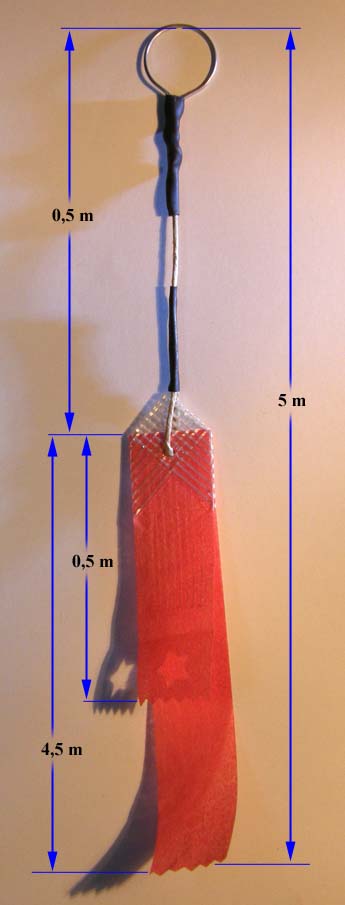 |
|
 The head of the experimental streamer. Sloping shoulders and no knot. Transparent tape gives the head the same color as the paper This video demonstrate how to make the knot  The new experimental streamer knot and a classic streamer knot  A piece of paper hanging on the knot of a classic streamer |
||
|
The steel ring: The raw steel ring is made from zinc plated mild steel wire. The wire is ø 1.2 mm and the inside diameter of the ring is 20 mm |
 |
|
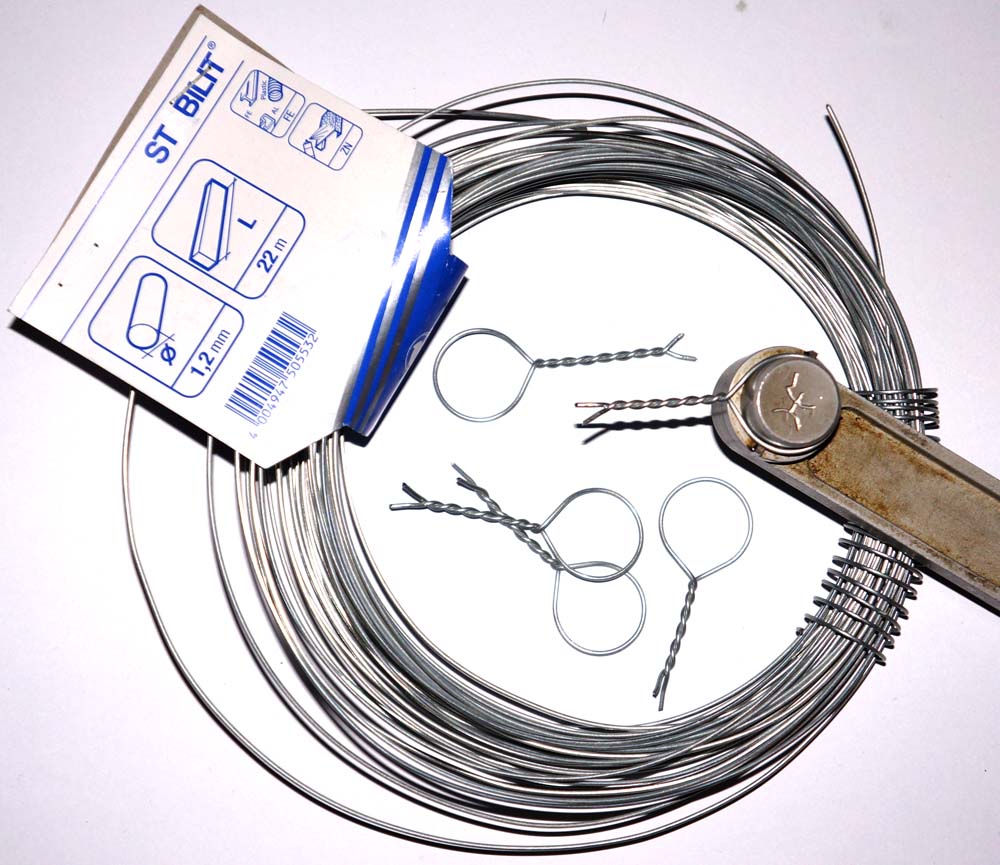 If the twisted wire is cut with a diagonal cutter there will be some sharp burrs at the end. These burrs might cut the string inside the shrink tube. A scissor-style cutter (cable cutter) was used to cut the wire for the experimental streamers. 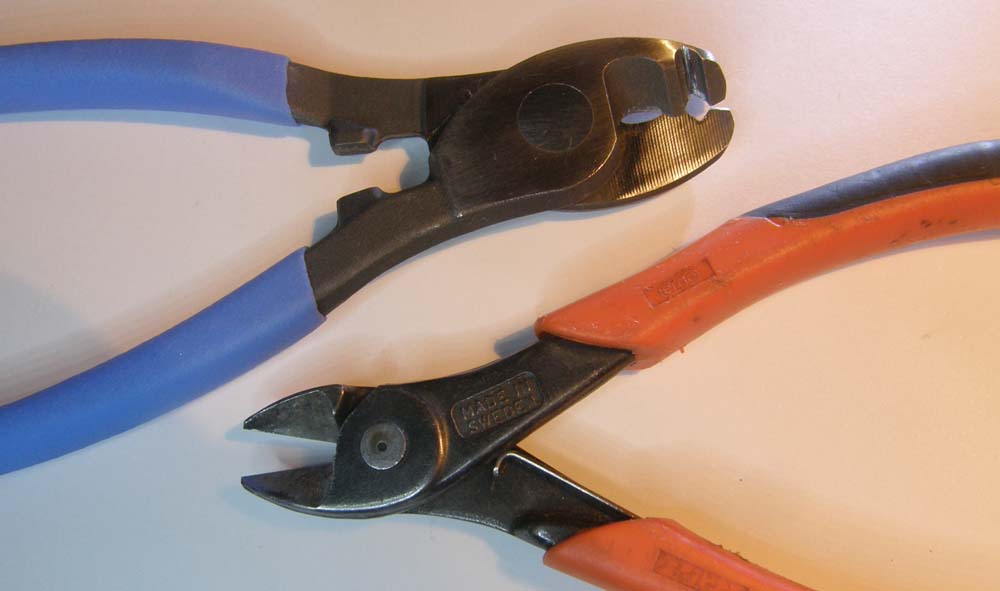 Scissor-style cutter (cable cutter) with blue handle and diagonal cutter with red handle 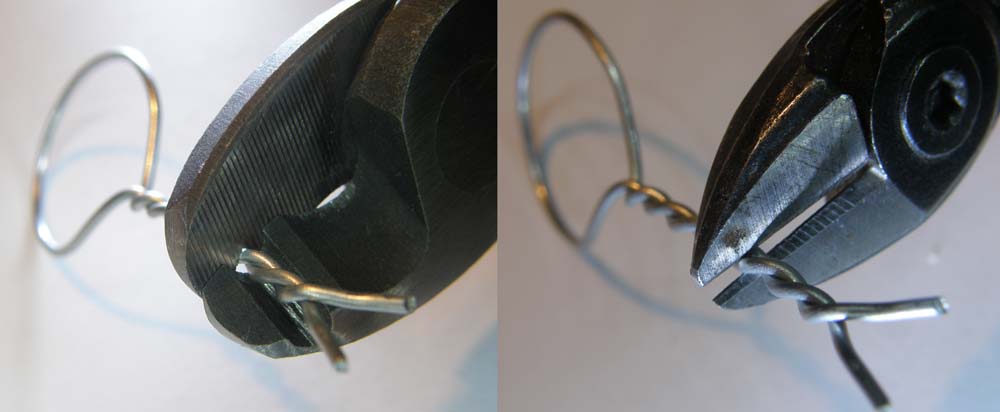 The cable cutter have been modified for the wire size 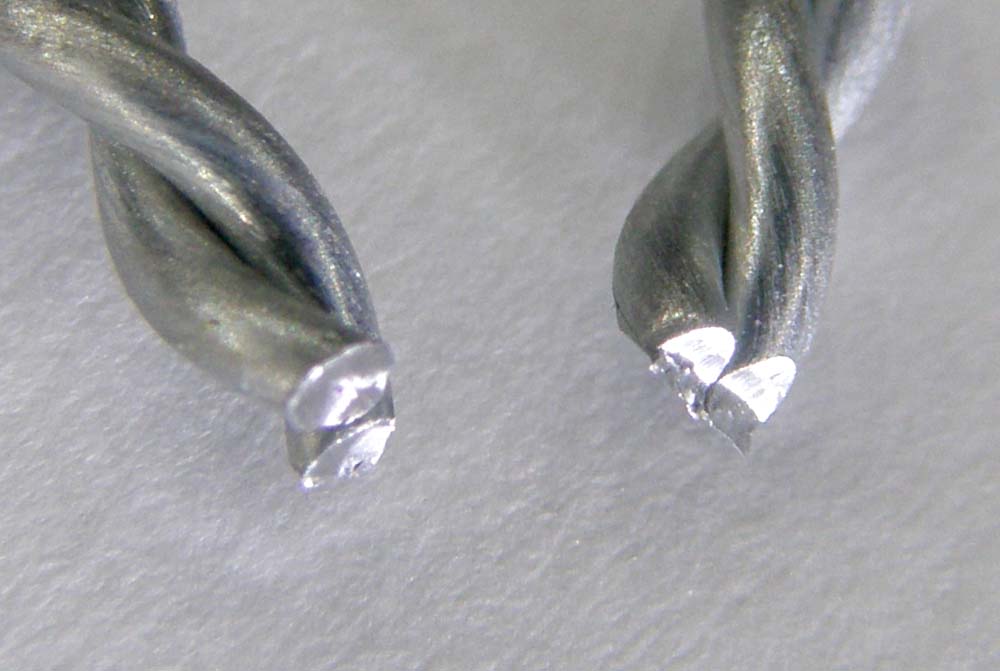 The difference between wires cut with a scissor-style cutter a diagonal cutter 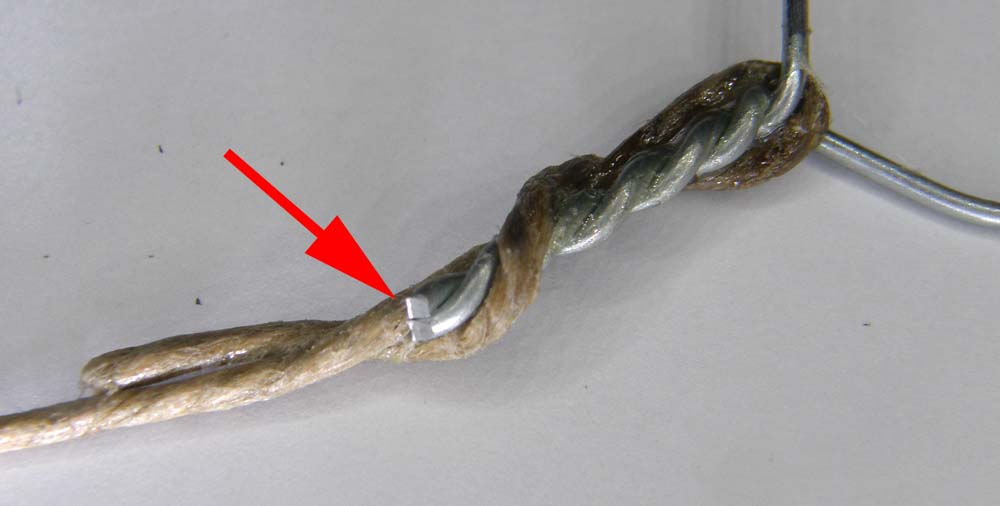 These sharp burrs might cut the string 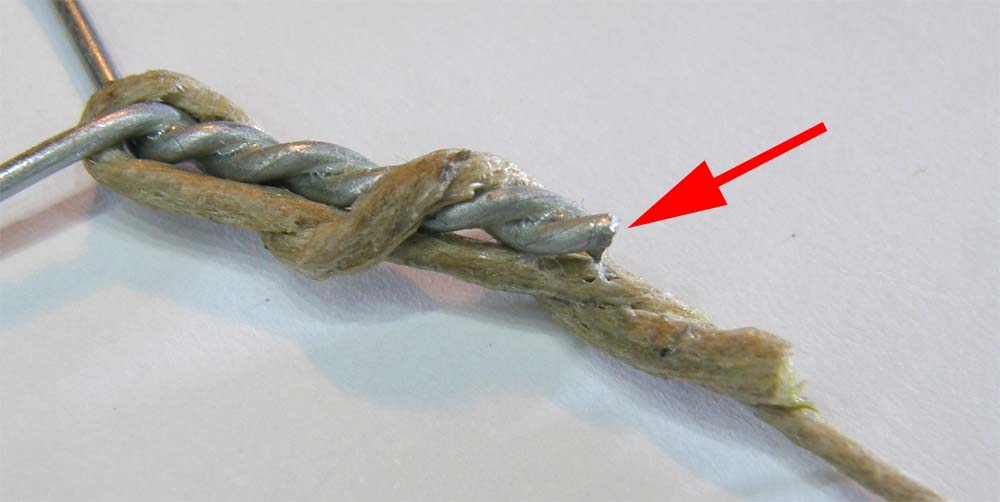 Wire cut with a modified cable cutter. No burrs - no problem. The string is soaked with contact glue before applying the shrink tube 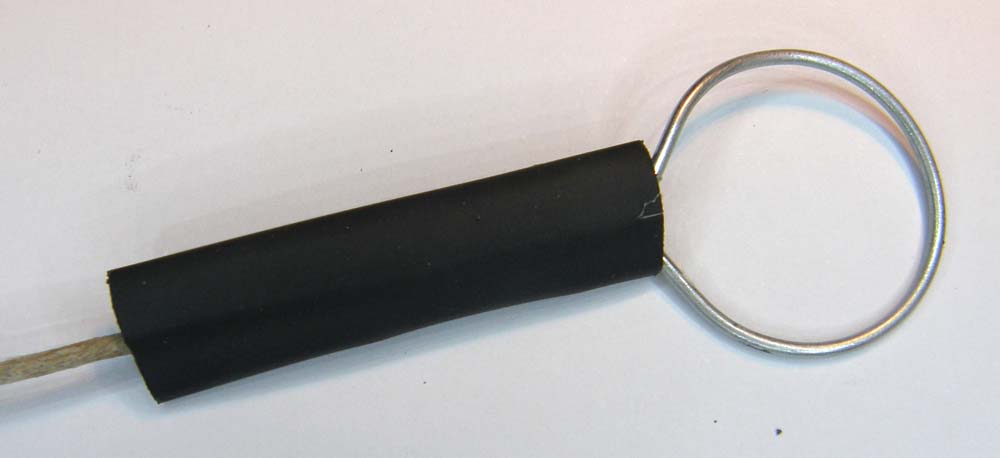 A piece of shrink tube are put over the connection 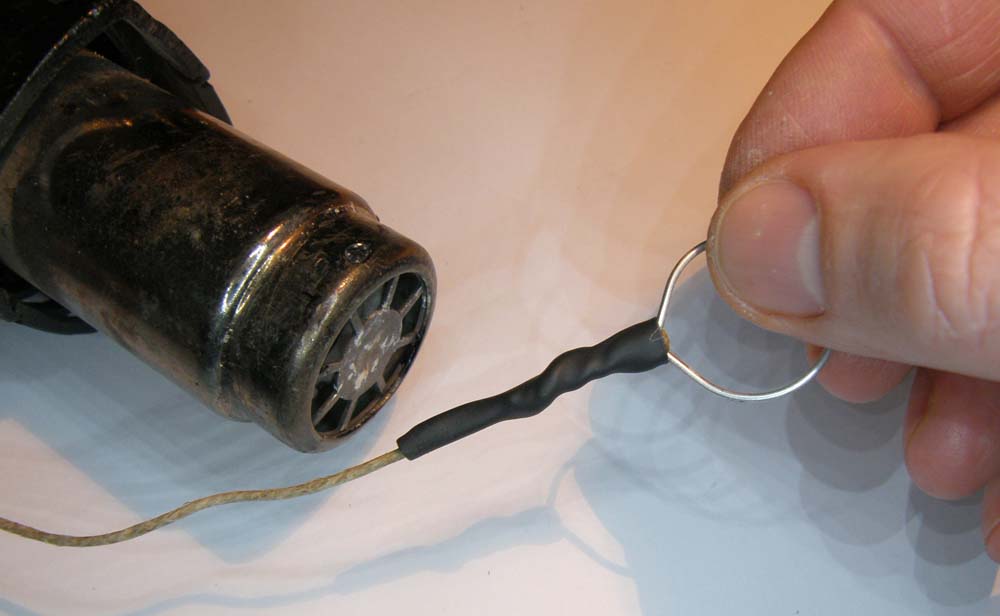 The heat shrink is shrieked with a heat blower. This could also be done in an oven 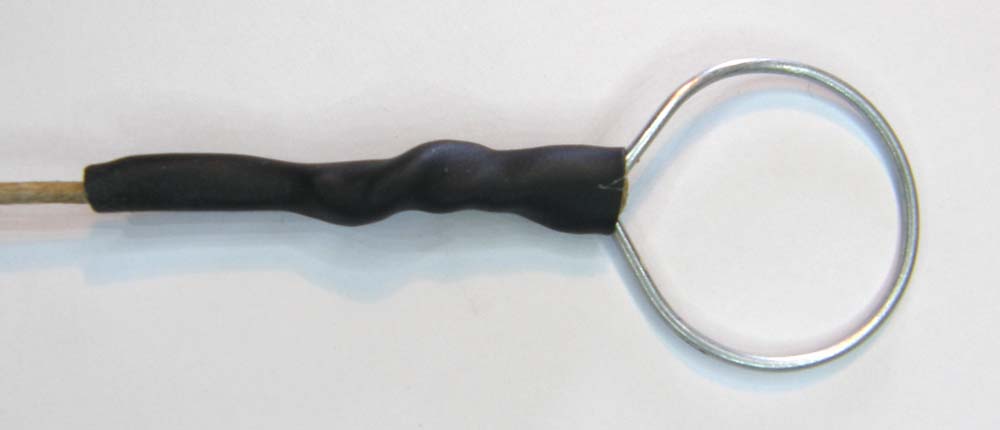
|
||
|
Packaging: The paper wrap around the streamer is to prevent the streamer from unfolding before it is handled to the pilot. Classic streamers often come with a rubber band but this rubber band may cut into the paper when it is pulled off. 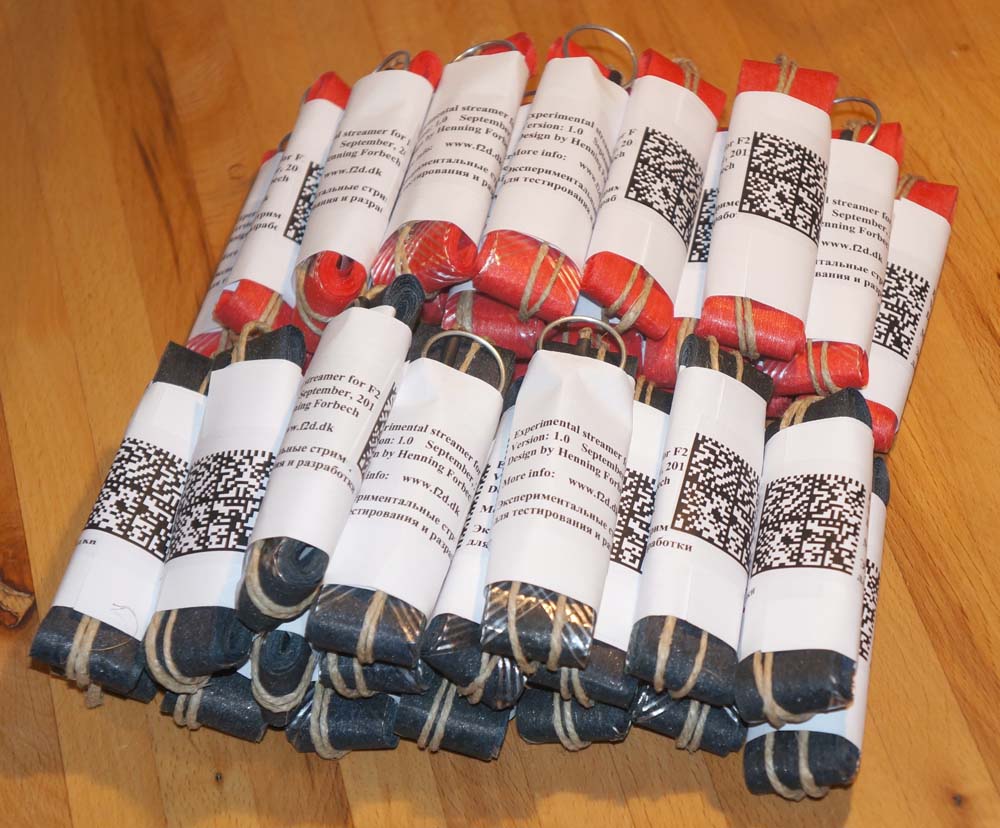
The wrapping can be marked with the manufacturers name, product number, batch number, etc. Maybe the wrapping can also be used for sponsor add. This streamer is sponsored by … |
||
|
Test in competition:   |
||
|
First test in USA Design version 1.0 of the experimental streamer have been tested at a F2D competition in Halifax, Massachusetts. Mark Rudners report on the experiment can be found in his F2D News - November 2012 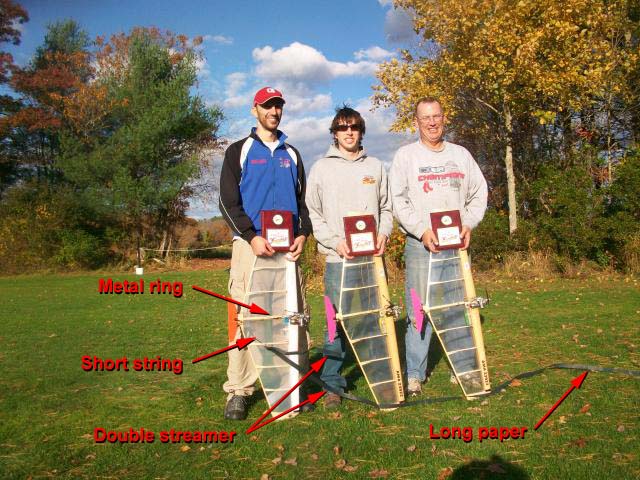 |

New England Combat News A lot of nice photos from the competition At Mark Rudner's F2D News in the F2D News - November 2012 you will find more information on the test at this competition Bob and Andy Mears tried a streamer after the 2012 WC's Combat-I |
|
|
Next step: The experience from the first tests lead to some changes to the design. The experimental streamer will now be upgraded to version 2.0 and the next test will be at a competition in Russia. Follow the development and test of the Experimental Streamer, Version 2.0 |
||
|
Your are welcome to comment on the experimental streamer, please use: Combat-I, Barton or FAS |
||